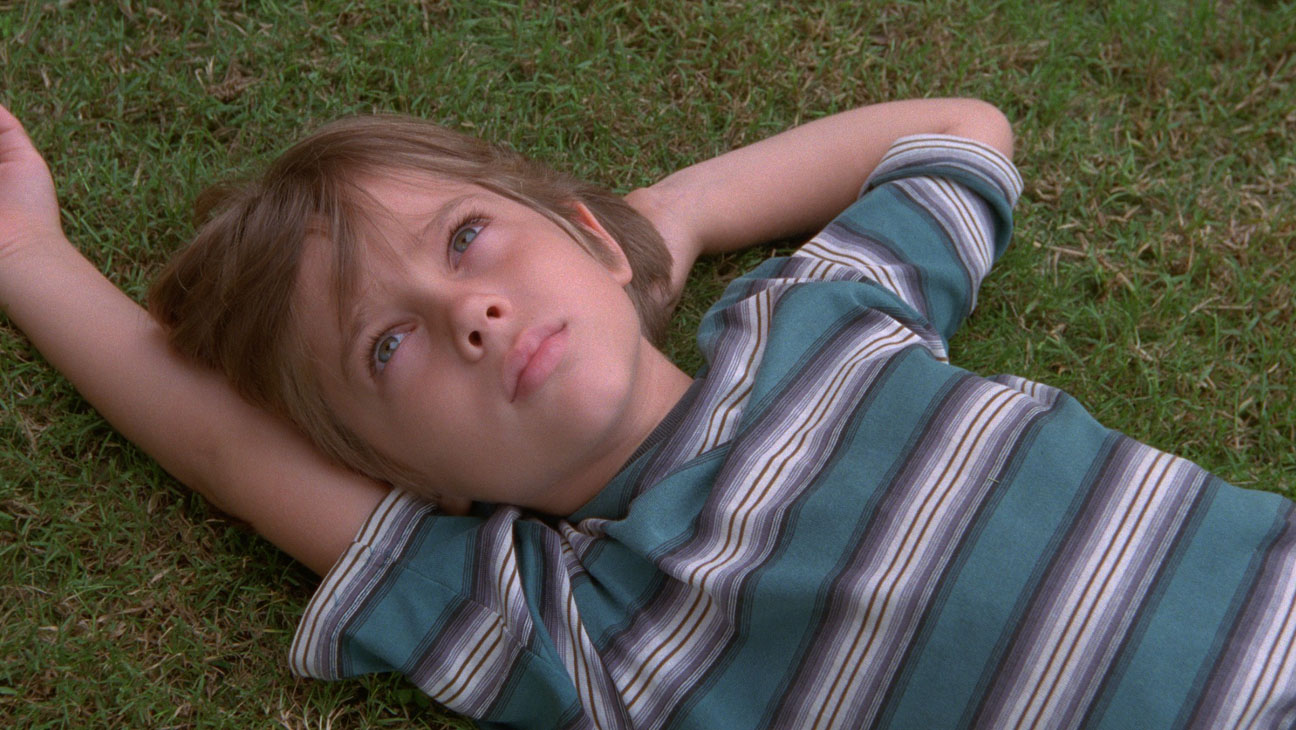It’s often hard – if not impossible – to try and give a nuanced critical response at Sundance; there’s something in the thin air that makes every film either majestic or misshapen, a classic worthy of close inspection for the rest of time or trash to be tossed over your shoulder while you never look back in the rear view. And while it may seem like splitting hairs, after seeing Richard Linklater’s 12-years-in-the-making Boyhood, premiering here, I found myself not using the often-maddening adjective of “Masterpiece,” but rather the slightly more specific noun “Masterwork,” in that it is very much Linklater’s best film, a mix of obvious ambition and subtler pleasures that draws from – and improves on – the themes, techniques, concerns and craft he’s shown ever since his film Slacker loosely, lazily put him on the map of American cinema in 1991.
Boyhood begins with young Mason (Ellar Coltrane) lying back in a field, watching the clouds go by in the big, blue Texas sky; he’s six, and his world is pretty much defined by his annoying older sister (Lorelai Linklater), his doting-but-exhausted mom Olivia (Patricia Arquette) and his absent-but-loved dad Mason Senior (Ethan Hawke). Young Mason has challenges – his bratty sister, his mom’s need to go back to school, a dad whose visits are all about recreation and rarely about responsibility – but he mostly copes. And the years pass, with moves and re-marriages and different schools and all the changes of life.
In many ways, Boyhood is a variation on Linklater’s Before trilogy; where the Before films present long slices of real-time pulled from every few years in the lives of the characters, Boyhood required Linklater shooting for a precious few days a year for 12 years, assembling a 160-minute long film that goes by in a heartbeat. The ambition here is stunning; so, frankly, is the good luck, as Coltrane, fortunately, not only managed to keep up with the acting and actions required year by year but in many cases does so perfectly. Linklater’s miracle of casting cannot be underestimated. It’s not like throwing a dart at a dartboard blindfolded; it’s more like throwing something at a dartboard blindfolded and then, 12 years later, finding that not only was it a dart you grabbed and threw way back when, but also that you hit the bullseye.
And yet ambition is not execution; Boyhood is, by definition, a sum of parts, and some of them work better than others. As fine as Coltrane, Linklater, Hawke and Arquette are, a few of the other performances feel unpolished, specifically regular Linklater collaborator Marco Perella as a professor who Arquette winds up married to; as the character’s boozing becomes more and more of a problem, his performance becomes more and more problematic.
But the true star is Linklater. While Mason Jr.’s journey through life goes on, the film doesn’t stop at the ‘significant’ life events as expected and specific as bus stops on a line; instead, Boyhood offers the sublime pleasure of a 160-minute film made up almost entirely of the scenes other films, and other filmmakers, cut. Linklater wisely uses pop music and pop culture as a timekeeper, going from Coldplay to Daft Punk, the Bush years to the era of Harry Potter mania. And in a nice inversion of the classic equation, time here equals both tragedy and comedy. You can imagine Mason wandering into Slacker as he goes off to Austin; the Before trilogy’s points about love as a variable expressed by and altered through years of time is here as well. Mason’s thoughts about life could fit him in with Fast Food Nation’s young slacktivists; his school days are not far removed from Dazed and Confused, albeit with less bell-bottomed jeans.
It feels well-nigh impossible to judge Boyhood in the context of other films; I can’t think of any fiction project that rivals its slow, careful unfolding over more than a decade, and while Michael Apted’s heralded Up films have been in-process even longer, they also cover a larger spread of time. As singular as it is extraordinary, a work that speaks to all of its creator’s concerns and requires all of his craft yet also expands on both. Boyhood may seem ambling and shambling and natural, but by the end of it, you realize that it’s a rare, special and significant case of art truly imitating life.

